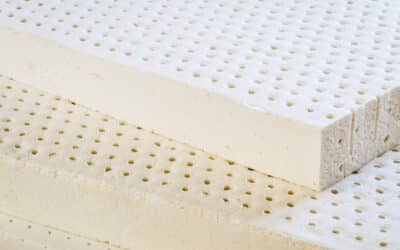Most independent sales representatives are not involved in the design or manufacture of the products they sell. Moreover, they don’t consider the products they sell to be inherently dangerous. As a result, many sales representatives are not overly concerned about product liability claims, if at all. However, ignoring the possibility of such claims can be a big mistake, for regardless of the rep’s “limited” role in the underlying sale, and despite the seemingly benign or safe nature of the products being sold, sales representatives can be, and often are, included as defendants in product liability lawsuits – which can be a very expensive undertaking, whether the case is won or lost. Therefore, independent sales representatives need to be mindful of, and, if at all possible, try to minimize the risks posed by product liability claims.
WHAT IS A PRODUCT LIABILITY CLAIM?
A product liability lawsuit is a claim based upon a personal injury, or property damage, caused by a product. Although state laws vary on the particulars, many share a broad definition of such claims. For example, under Illinois law, a product liability action includes “any action based on any theory or doctrine brought against the seller of a product on account of personal injury . . . or property, economic or other damage allegedly caused by or resulting from the manufacture, construction, preparation, assembly, installation, testing, makeup, characteristics, functions, design, formula, plan, recommendation, specification, prescription, advertising, sale, marketing, packaging, labeling, repair, maintenance or disposal of, or warning or instruction regarding any product.”
Significantly, the manufacturer of a product is not the only entity that can be held liable in a product liability suit. Rather, such liability can extend to any “seller” of a product, which, under one state’s laws, includes any entity that “sells, distributes, leases, assembles, installs, produces, manufactures, fabricates, prepares, constructs, packages, labels, markets, repairs, maintains, or otherwise is involved in placing a product in the stream of commerce.” The theory behind extending liability to all individuals and companies involved in the chain of distribution of a defective or dangerous product is that the risk of loss caused by defective or unsafe products should be borne by those who create the risk, including those who participate in the profits derived from placing such a product in the stream of commerce.
The defect upon which a product liability claim can be brought can be in the design, engineering or manufacture of the product. It also can be based on a defect in packaging or in the content, or absence, of instructions, labels and warnings. Further, product liability claims don’t just involve large equipment or products that obviously are dangerous, such as those with sharp edges, which use electricity or which generate heat. Numerous cases involve products that seemingly are harmless, such as toys (lead paint, heavy metal content, subject to being swallowed), household furnishings and furniture (chemical fumes) and clothing (flammability).
A product liability suit is generally based on either a strict liability or a negligence theory. Under a “strict liability” theory, a manufacturer or seller of a product is held liable to the injured party based not upon its fault in causing the injury, but simply because the product it manufactured or placed in the stream of commerce was defective or unsafe and caused an injury. Under a “negligence” theory, a manufacturer or seller can be held liable if it owed a duty to the person injured by the product and breached its duty by failing to act reasonably in view of a foreseeable risk of injury from the product.
HOW PRODUCT LIABILITY CLAIMS DIFFER FROM WARRANTY CLAIMS
Although they are somewhat related, product liability claims, which are based on strict liability or negligence, are distinct from breach of warranty claims. A breach of warranty claim is essentially a breach of contract claim between the buyer and seller. A warranty is a statement or representation made by the seller or manufacturer as part of a contract regarding some aspect of the product, such as its quality or performance. A warranty can either be expressly set out in the contract, or can be implied by the law as part of the contract, such as the implied warranties of merchantability and of fitness for a particular purpose imposed upon sales under the Uniform Commercial Code. A manufacturer or seller can be held liable for an injury caused by a product when that product did not comply with the terms of such a warranty. While warranty claims can be limited or disclaimed in their entirety by means of a well-drafted contract or commercial forms, the same is not true for product liability claims.
TIPS ON HOW TO MINIMIZE POTENTIAL EXPOSURE FOR PRODUCT LIABILITY CLAIMS
Since you and your company engage in the sale of products in the stream of commerce, there is no absolute guaranteed way to avoid potential exposure for product liability claims. However, there are some things that you can do to minimize the effect that such claims can have upon your business:
First, always seek to include an indemnification provision in a sales representative agreement. Since the manufacturer already will be in the lawsuit (after all, it is their product), the obligation to indemnify, defend and hold you harmless from the same claim should not add significant cost or burden. Further, the principal likely will benefit from having its rep (or even possibly its former rep) as part of its defense team.
Second, you also should seek to be included as an additional insured on your principal’s product liability insurance policy. Doing so typically will not increase the cost of such coverage.
Third, make sure that the principal’s obligation to indemnify you survives the termination of the rep agreement and your relationship, since a product liability lawsuit possibly can be filed years after you no longer handle the product at issue.
Fourth, in the context of defending the suit itself, make sure that your defense counsel, whether appointed by an insurance company or otherwise, is mindful of exactly what an independent sales representative does. In a recent case, the insurance-appointed defense counsel mistakenly stated to the court that his client was the exclusive “distributor” of the product in the state. Actually, the representative was not a distributor, but was the exclusive independent sales representative for the manufacturer in that state. However, not being mindful of the distinction, the attorney mis-spoke and the judge utilized that statement as an admission, which ultimately resulted in the denial of the rep’s motion (request) to be dismissed from the case prior to trial.
Fifth, keep archived copies of all sales representative agreements (and modifications) and insurance policies. In some instances, a claim could be brought years later. If that should happen, you will need to be able to establish that your former principal had a continuing obligation to indemnify you that survived termination. Further, many insurance companies don’t keep copies of all policies and records after some time.
Finally, if your rep agency also engages in “buy/sell” business where it takes title to the goods and acts as a distributor, you should seek to include an indemnification provision in the commercial documents with your vendor. You also may want to consider utilizing a separate business entity to engage in such transactions. Doing so could protect the commission side of your business from being subject to product liability claims from the buy/sell part of your business.
While most sales representatives will never be the subject of a product liability claim, you always need to be mindful of the possibility of such an action, especially if the products you sell are inherently dangerous, and take whatever steps are available to minimize your exposure.



